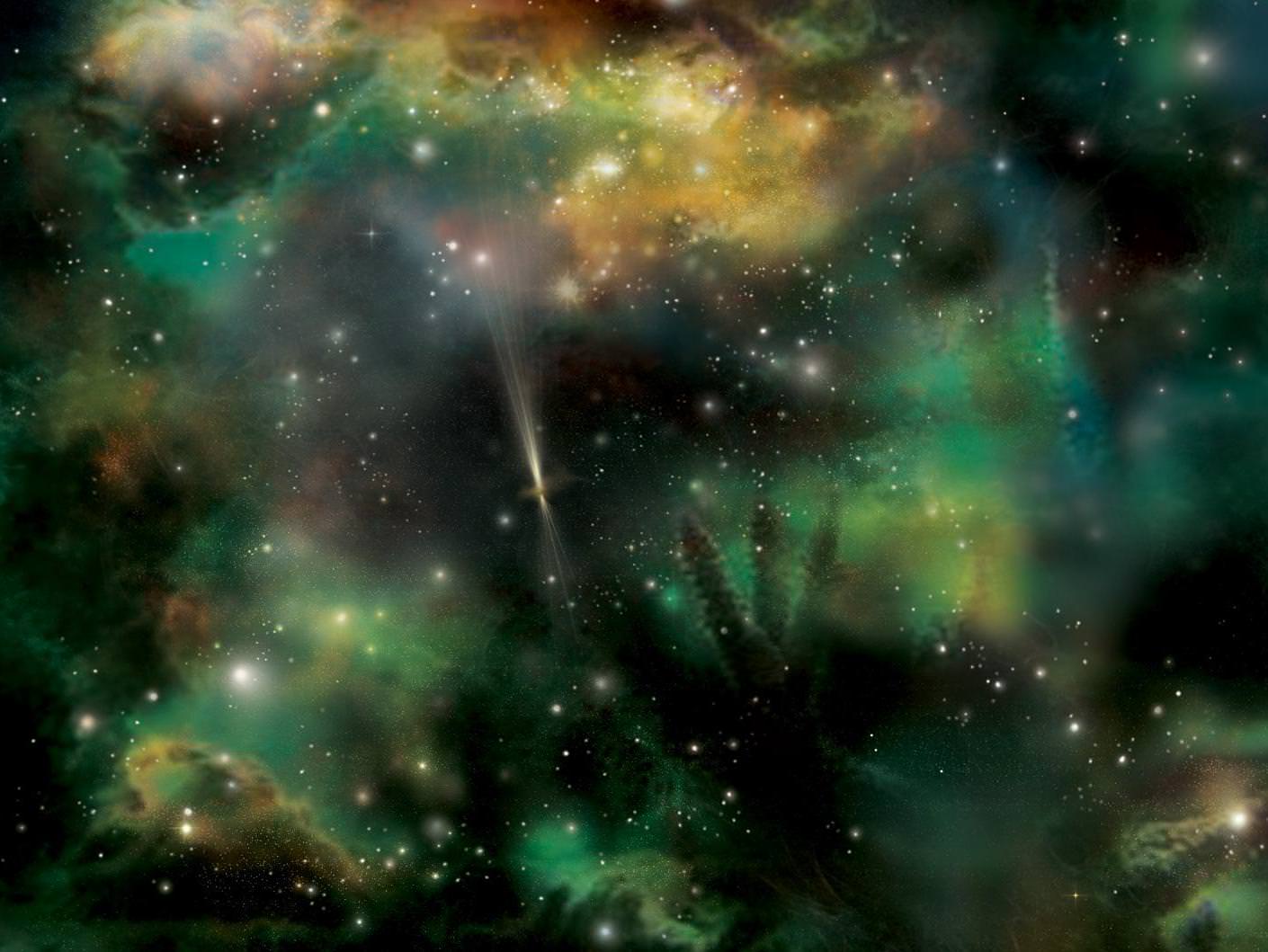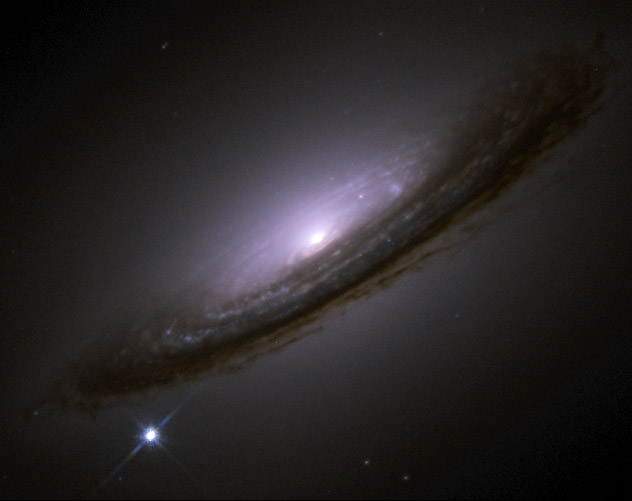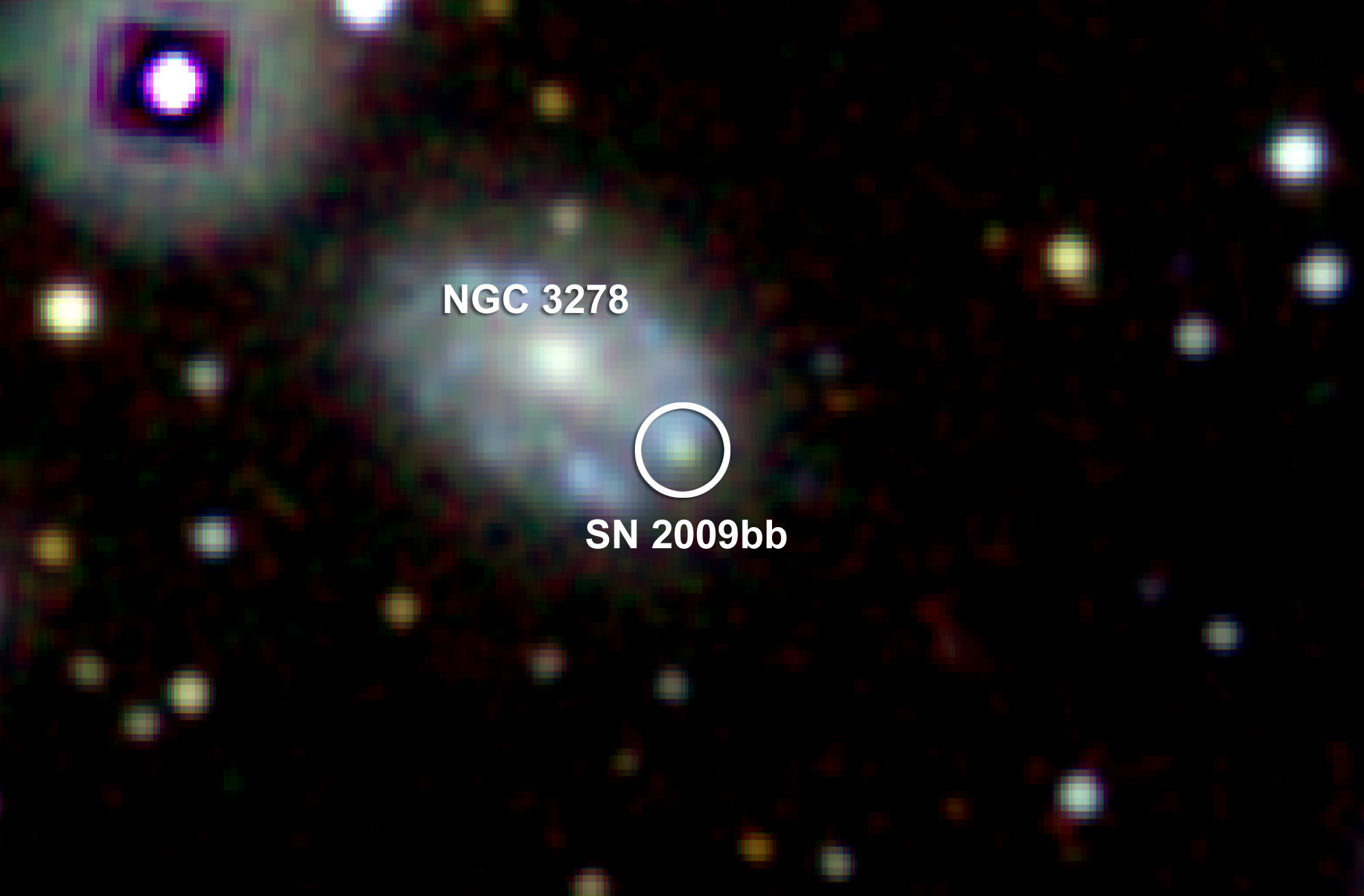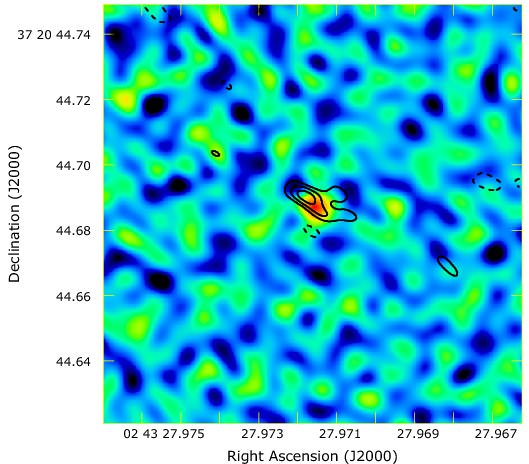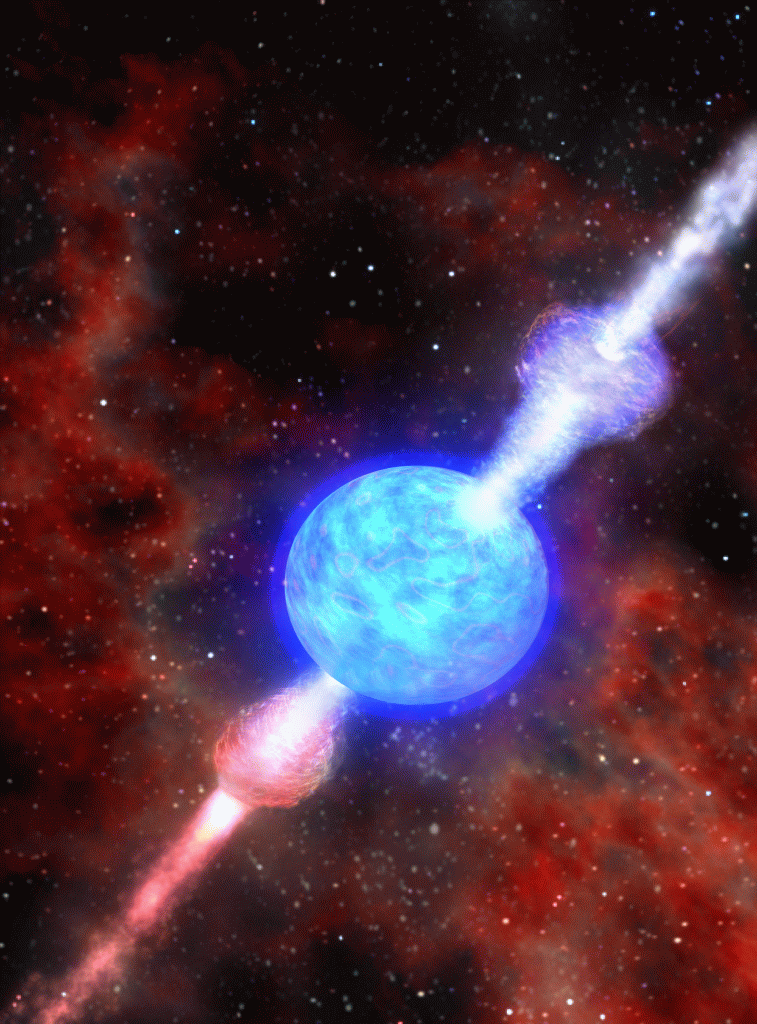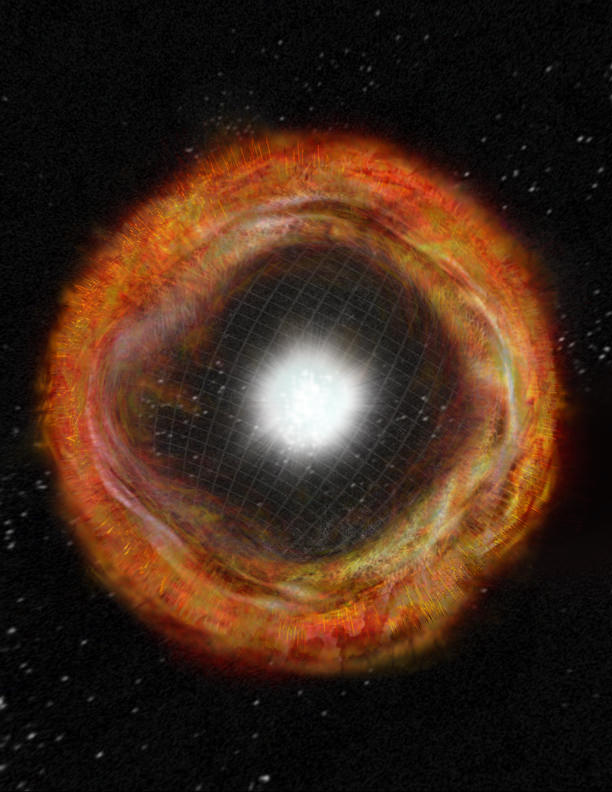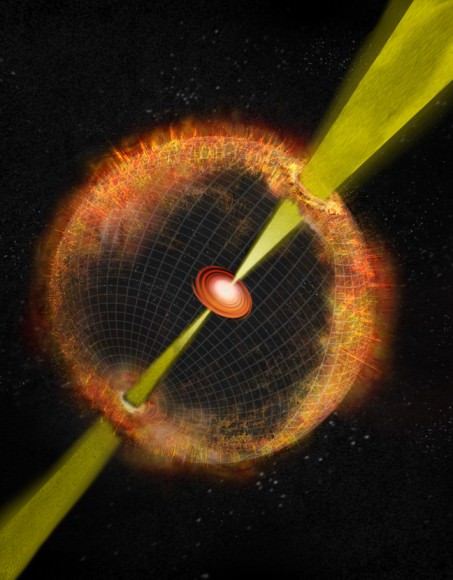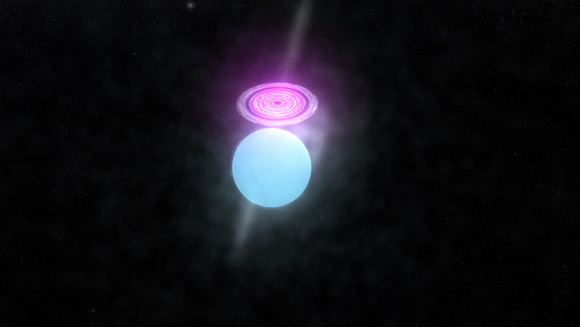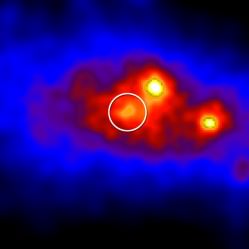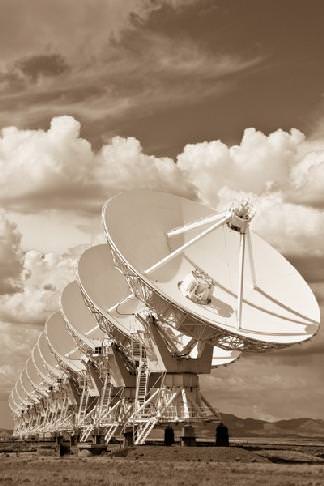[/caption]
Gamma Ray Bursts (GRBs) are among the most energetic phenomena astronomers regularly observe. These events are triggered by massive explosions and a large amount of the energy if focused into narrow beams that sweep across the universe. These beams are so tightly concentrated that they can be seen across the visible universe and allow astronomers to probe the universe’s history. If such an event happened in our galaxy and we stood in the path of the beam, the effects would be pronounced and may lead to large extinctions. Yet one of the most energetic GRBs on record (GRB 080607) was shrouded in cloud of gas and dust dimming the blast by a factor of 20 – 200, depending on the wavelength. Despite this strong veil, the GRB was still bright enough to be detected by small optical telescopes for over an hour. So what can this hidden monster tell astronomers about ancient galaxies and GRBs in general?
GRB 080607 was discovered on June 6, 2008 by the Swift satellite. Since GRBs are short lived events, searches for them are automated and upon detection, the Swift satellite immediately oriented itself towards the source. Other GRB hunting satellites quickly joined in and ground based observatories, including ROTSE-III and Keck made observations as well. This large collection of instruments allowed astronomers, led by D. A. Perley of UC Berkley, to develop a strong understanding of not just the GRB, but also the obscuring gas. Given that the host galaxy lies at a distance of over 12 billion light years, this has provided a unique probe into the nature of the environment of such distant galaxies.
One of the most surprising features was unusually strong absorption near 2175 °A. Although such absorption has been noticed in other galaxies, it has been rare in galaxies at such large cosmological distances. In the local universe, this feature seems to be most common in dynamically stable galaxies but tends to be “absent in more disturbed locations such as the SMC, nearby starburst galaxies” as well as some regions of the Milky Way which more turbulence is present. The team uses this feature to imply that the host galaxy was stable as well. Although this feature is familiar in nearby galaxies, observing it in this case makes it the furthest known example of this phenomenon. The precise cause of this feature is not yet known, although other studies have indicated “polycyclic aromatic hydrocarbons and graphite” are possible suspects.
Earlier studies of this event have shown other novel spectral features. A paper by Sheffer et al. notes that the spectrum also revealed molecular hydrogen. Again, such a feature is common in the local universe and many other galaxies, but never before has such an observation been made linked to a galaxy in which a GRB has occurred. Molecular hydrogen (as well as other molecular compounds) become disassociated at high temperatures like the ones in galaxies containing large amounts of star formation that would produce regions with large stars capable of triggering GRBs. With observations of one molecule in hand, this lead Sheffer’s team to suspect that there might be large amounts of other molecules, such as carbon monoxide (CO). This too was detected making yet another first for the odd environment of a GRB host.
This unusual environment may help to explain a class of GRBs known as “subluminous optical bursts” or “dark bursts” in which the optical component of the burst (especially the afterglow) is less bright than would be predicted by comparison to more traditional GRBs.
Sources:
Monster in the Dark: The Ultra Luminous GRB 080706 and its Dusty Environment
The Discovery of Vibrationally-Excited H2 In the Molecular Cloud Near GRB 080706

